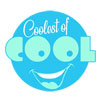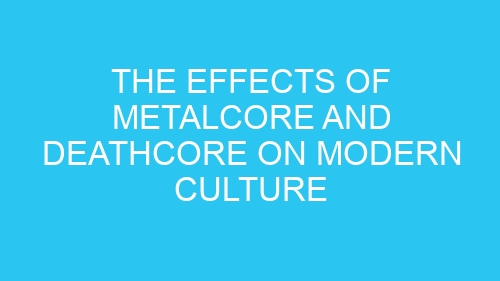-
Table of Contents
The Influence of Metalcore and Deathcore on Contemporary Music
Metalcore and deathcore, two subgenres of heavy metal, have had a profound impact on contemporary music. These genres, with their aggressive sound and intense lyrics, have infiltrated the mainstream and left an indelible mark on modern culture. From their origins in the underground scene to their current domination of the airwaves, metalcore and deathcore have become a force to be reckoned with.
Let’s take a journey through the influence of metalcore and deathcore on contemporary music, shall we? Buckle up, because it’s going to be a wild ride!
First, let’s talk about the sound of metalcore and deathcore. These genres are characterized by their fusion of hardcore punk and extreme metal elements. Picture this: a mosh pit filled with headbanging fans, screaming their lungs out to breakdowns that hit harder than a freight train. It’s like a musical rollercoaster that takes you from melodic verses to bone-crushing breakdowns in a matter of seconds. It’s a sound that grabs you by the throat and refuses to let go.
But it’s not just the sound that sets metalcore and deathcore apart. It’s the lyrics too. These genres tackle dark and introspective themes, often exploring topics like personal struggles, mental health, and societal issues. It’s like therapy set to music, except instead of lying on a couch, you’re in a mosh pit, screaming your heart out. It’s cathartic, to say the least.
Now, let’s talk about the impact of metalcore and deathcore on the mainstream. These genres have infiltrated popular culture in ways that no one could have predicted. Remember when you couldn’t turn on the radio without hearing a metalcore or deathcore band? Yeah, me neither. But that’s because it never happened. These genres have remained largely underground, with a dedicated fanbase that keeps the flame alive.
However, that doesn’t mean metalcore and deathcore haven’t left their mark on contemporary music. Many mainstream artists have incorporated elements of these genres into their music, creating a hybrid sound that appeals to a wider audience. It’s like metalcore and deathcore went on a blind date with pop music, and they hit it off like a house on fire. The result? A new wave of music that combines catchy hooks with heavy breakdowns, creating a sound that’s both accessible and aggressive.
But it’s not just the music that has been influenced by metalcore and deathcore. The fashion and aesthetic of these genres have also made their way into mainstream culture. Remember when everyone was wearing band t-shirts and skinny jeans? Yeah, you can thank metalcore and deathcore for that. These genres have inspired a whole generation of fashion-forward individuals who embrace the dark and edgy aesthetic that metalcore and deathcore represent.
In conclusion, metalcore and deathcore have had a significant impact on contemporary music and culture. From their aggressive sound to their introspective lyrics, these genres have carved out a niche for themselves in the underground scene. While they may not have taken over the mainstream, their influence can be felt in the hybrid sounds and fashion trends that have emerged in recent years. So, next time you find yourself headbanging to a breakdown or rocking a band t-shirt, remember that you’re part of a movement that’s changing the face of modern culture. Keep on moshing, my friends!
Metalcore and Deathcore: A Subculture’s Impact on Fashion and Style
Metalcore and Deathcore: A Subculture’s Impact on Fashion and Style
When it comes to music, there are countless genres and subgenres that have emerged over the years. From rock to pop to hip-hop, each genre has its own unique sound and fan base. But there is one particular subculture that has been making waves in recent years, and that is metalcore and deathcore. Not only do these genres have a distinct sound, but they have also had a significant impact on modern culture, particularly in the realm of fashion and style.
Let’s start with metalcore. This genre combines elements of heavy metal and hardcore punk, resulting in a sound that is both aggressive and melodic. Metalcore bands like Killswitch Engage and As I Lay Dying have gained a massive following, and their influence can be seen not only in the music scene but also in the fashion world.
Metalcore fashion is all about embracing the dark side. Black is the go-to color, and band t-shirts with bold, graphic designs are a staple in any metalcore fan’s wardrobe. But it doesn’t stop there. Metalcore fashion also includes ripped jeans, leather jackets, and studded accessories. The goal is to look edgy and rebellious, just like the music itself.
And then there’s deathcore. This genre takes metalcore to a whole new level, with even heavier and more aggressive sounds. Bands like Suicide Silence and Whitechapel have become synonymous with deathcore, and their impact on fashion cannot be ignored.
Deathcore fashion is all about embracing the extreme. It’s not enough to wear black; deathcore fans take it a step further with band t-shirts featuring gruesome artwork and lyrics. And when it comes to accessories, the more spikes and chains, the better. Deathcore fashion is all about pushing boundaries and making a statement.
But what about the impact of metalcore and deathcore on mainstream fashion? Believe it or not, these subcultures have had a significant influence on the fashion world at large. Take a look at any high street store, and you’re likely to find band-inspired t-shirts and accessories. Metalcore and deathcore fashion has become so popular that even those who don’t listen to the music are embracing the style.
Of course, not everyone is a fan of metalcore and deathcore fashion. Some argue that it promotes a negative image and glorifies violence. But others see it as a form of self-expression and a way to connect with like-minded individuals. After all, fashion is all about personal style, and metalcore and deathcore fashion certainly make a statement.
In conclusion, metalcore and deathcore have had a significant impact on modern culture, particularly in the realm of fashion and style. From the dark and edgy fashion choices to the influence on mainstream fashion, these subcultures have made their mark. Whether you love it or hate it, there’s no denying that metalcore and deathcore have left a lasting impression on the world of fashion. So next time you see someone rocking a band t-shirt or sporting a studded accessory, remember that they might just be a metalcore or deathcore fan, embracing their love for the music and expressing themselves through fashion.
The Evolution of Metalcore and Deathcore: Shaping Modern Youth Culture
Metalcore and deathcore, two subgenres of heavy metal, have had a profound impact on modern culture, particularly among the youth. These genres have evolved over the years, shaping the way young people express themselves and influencing various aspects of their lives. From fashion choices to social attitudes, metalcore and deathcore have left an indelible mark on the fabric of our society.
Let’s take a trip down memory lane and explore the evolution of metalcore and deathcore. Back in the early 2000s, metalcore emerged as a fusion of hardcore punk and heavy metal. Bands like Killswitch Engage and As I Lay Dying brought a new level of aggression and intensity to the scene, captivating audiences with their powerful breakdowns and melodic choruses. It was like a musical rollercoaster, taking listeners on a wild ride of emotions.
But metalcore didn’t stop there. It continued to evolve, incorporating elements of other genres like pop punk and even electronic music. Suddenly, bands like Bring Me The Horizon and Asking Alexandria were blending catchy hooks with bone-crushing breakdowns, creating a sound that was both heavy and accessible. This fusion of styles appealed to a wider audience, attracting not only metalheads but also fans of alternative and mainstream music.
Deathcore, on the other hand, took a darker and more extreme path. With its guttural vocals, lightning-fast guitar riffs, and relentless blast beats, deathcore pushed the boundaries of heaviness. Bands like Suicide Silence and Whitechapel brought a level of brutality that was unmatched, leaving listeners in awe of their sheer intensity. It was like being punched in the face repeatedly, but in the best possible way.
As metalcore and deathcore gained popularity, they began to influence more than just the music scene. They became a lifestyle, a way for young people to express themselves and rebel against societal norms. Suddenly, black band t-shirts and skinny jeans were the fashion statement of choice, and mosh pits became the ultimate form of release. It was a time of self-discovery and rebellion, where kids could let loose and embrace their inner darkness.
But metalcore and deathcore didn’t just shape fashion trends. They also had a profound impact on social attitudes. The aggressive and cathartic nature of the music allowed listeners to channel their anger and frustration, providing an outlet for their emotions. It was a way to cope with the challenges of adolescence and find solace in a community of like-minded individuals. Metalcore and deathcore became a support system, a place where young people could find acceptance and understanding.
In conclusion, metalcore and deathcore have had a significant influence on modern culture, particularly among the youth. These genres have evolved over the years, shaping the way young people express themselves and influencing various aspects of their lives. From fashion choices to social attitudes, metalcore and deathcore have left an indelible mark on the fabric of our society. So next time you see a group of kids wearing black band t-shirts and headbanging to some heavy music, remember that they are not just rebels, they are part of a cultural movement that has shaped the world we live in today.

